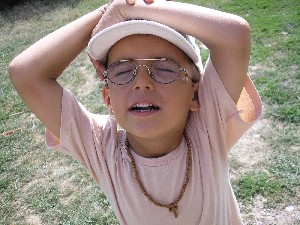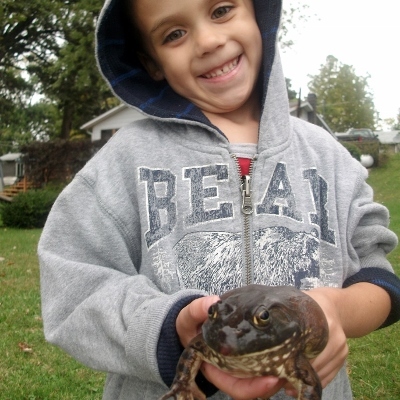 Since I have poor vision, I made sure to have my children checked regularly for any eye problems. As it turns out, each one of them needed vision correction in order to see clearly. But what if you and your partner have perfect vision? You don’t have to worry about your children’s eyes, right? Wrong! Just because you see the world clearly, doesn’t mean your child does.
Since I have poor vision, I made sure to have my children checked regularly for any eye problems. As it turns out, each one of them needed vision correction in order to see clearly. But what if you and your partner have perfect vision? You don’t have to worry about your children’s eyes, right? Wrong! Just because you see the world clearly, doesn’t mean your child does.
Information from Prevent Blindness America (PBA) states that only 1 in three children in the United States receive eye care services before the age of six. As you can guess, this organization wants to change this number; each child must be tested for vision problems early, and they must continue to be tested often.
I realize that back to school time can be hectic, but why not make an appointment for your child to have his or her eyes checked? Eye care providers can identify the most common eye problems in children. They are (as outlined by PBA):
Amblyopia – reduced vision in an eye that has not received adequate use during early childhood.
Strabismus – a deviation of the eyes. The term is used to describe eyes that are not straight or properly aligned.
Hyperopia – a refractive error. Hyperopia occurs when the eyeball is too short. The reduced length means the point of focus lies beyond the back wall of the eye, and light rays are not yet in focus when they arrive at the retina.
Myopia – a refractive error. Myopic or nearsighted people generally can see near objects clearly, but distant objects are out of focus.
Astigmatism – a refractive error. The curvature of the cornea and/or lens prevents light rays from focusing on a single point on the retina, resulting in a blurred image.
These words and conditions may not be familiar to you; however, they are common problems. In fact, PBA states that one in four school children suffer from some type of eye problem, those listed above included.
In addition, even though you may have had your child’s eyes tested in the past, you still need to be watchful for symptoms of eye problems. These symptoms can include:
1. Rubbing of the eyes.
2. Squinting.
3. Tilting the head to one side or thrusting if forward when focusing on an object.
4. Eyes that water or are crusty.
5. Complaints of headaches or stomachaches.
6. Eyes look crossed!
7. Places reading material very close to the face.
As a parent it can be very easy to miss these signs. My own parents did, and because of that, I am functionally blind in one eye. Simply put, my brain quit receiving messages from this “bad” eye, and because of that, I have no depth perception. This means I can’t catch a ball, I can’t negotiate changes in elevation very well, and my brain doesn’t register 3-D movies!
So, be your child’s best advocate; take him or her for an eye exam to ensure the best eyesight possible.










